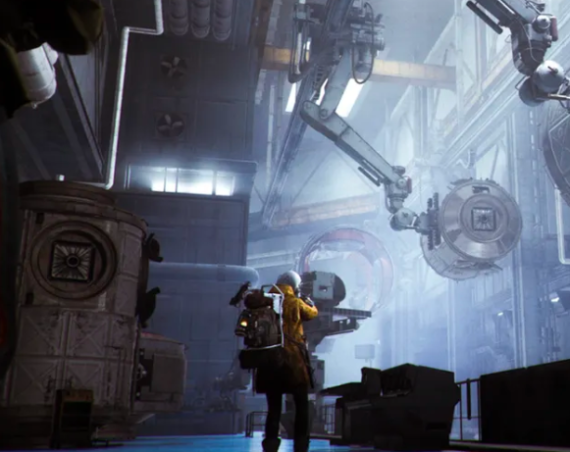
Dying Light: The Beast Marks a New Era for Techland and Its Survival Horror Series
For game developers, witnessing the realization of a decade’s work is both rewarding and challenging. Polish studio Techland recently experienced this milestone with the release of Dying Light: The Beast. Despite launching in a highly competitive year for gaming, Techland’s game director, Nathan Lemaire, maintained robust confidence in the project, underscoring the team’s dedication to excellence and innovation in survival horror gaming.
The Confidence Behind a Highly Anticipated Release
Techland advanced the release date of Dying Light: The Beast by a day, as a thank-you to the one million fans who pre-ordered the game. According to Lemaire, approaching launch, he was confident the game was strong regardless of how critics or audiences would react. This confidence was justified when the game achieved an 80 aggregate score on Metacritic, marking it as the highest-rated game in the Dying Light series to date.
- Original Dying Light scored 74 on Metacritic.
- Dying Light 2 reached a 76 aggregate score.
- Dying Light: The Beast stands out with a score of 80.
This success reflects Techland’s commitment not only to quality but also to the community-driven development process, highlighted by their ongoing post-launch updates and responsiveness to player feedback.
Community Engagement Fuels Continuous Improvement
Techland has actively involved its community in refining The Beast. Dedicated teams monitor player experiences to quickly address reported issues such as the infamous “indoor rain” bug or the daytime appearance of night-roaming Volatiles. This engagement showcases a modern best practice in game development: leveraging passionate fanbases to enhance gameplay stability and enjoyment.
Researchers in game development emphasize the critical role of post-launch support and community feedback in maintaining player engagement and extending a game’s lifecycle. Studies indicate that games with active post-release support sustain player retention rates up to 35% higher than those without (Source: Gamasutra).
Streamlined Design: The “Less is More” Philosophy
Lemaire describes Dying Light: The Beast as a refined, cohesive experience where “less is more.” Opting for a tighter scope compared to previous installments, the game focuses on core gameplay elements like combat, parkour, and narrative intensity.
This design approach contrasts with trends favoring feature-bloat and sprawling skill trees in many modern action titles. Instead, The Beast offers a streamlined four-branch skill tree concentrating on agility, survival, power, and the new Beast Mode, creating an individual, dense player experience.
- Reduced skill tree complexity: Emphasizing meaningful progression over quantity.
- Enhanced combat mechanics: Prioritizing responsiveness and fluidity.
- Integrated parkour features: Some core skills are pre-unlocked, reflecting the protagonist Kyle Crane’s experience.
Lemaire’s previous work on Ubisoft’s Far Cry series informed this philosophy, advocating for quality over quantity. His intent was to renew the franchise’s core gameplay without radically overhauling its successful formula.
The Climactic Finale and Narrative Depth
The game culminates in a powerful final mission that intertwines the fates of protagonists Kyle Crane and Aiden Caldwell. The atmospheric and narrative design reinforces the series’ roots while subtly celebrating its legacy.
Techland’s collaboration with composer Olivier Deriviere further enriches the experience by weaving musical motifs from previous installments into the soundtrack, notably during climactic moments. This adds emotional depth and continuity for long-time fans, while avoiding superficial fan service.
The game’s story reaches a fever pitch during a tense “dinner party” scene, heralded as the merging point of multiple narrative threads and a highlight of survival horror storytelling in recent years.
Notable Narrative Techniques:
- Character-driven scenes that deepen player connection.
- Use of environmental storytelling to enhance immersion.
- Dynamic soundtrack layering that recalls series history.
Looking Forward: A Bright Future for the Series
Lemaire articulates a hopeful vision for the Dying Light franchise’s future. While The Beast serves as a definitive chapter, it also represents a new beginning filled with fresh ideas and possibilities. The Techland team is motivated to explore innovative gameplay and narrative concepts while honoring the signature survival horror experience their fans cherish.
Industry trends show that franchises which actively balance legacy preservation with innovative experimentation tend to maintain long-term success. This aligned strategy is evident in Techland’s approach.
Summary: Key Highlights of Dying Light: The Beast
- Highest Metacritic rating in the series with a score of 80.
- Community-centric development and post-launch support ensure ongoing improvement.
- Focused game design reflecting a “less is more” principle applied to skill trees and open world scope.
- Rich narrative climax integrating series lore and dynamic music composition.
- Bright future outlook with a passionate team committed to innovation and quality.
Conclusion
Dying Light: The Beast represents both an ending and a new chapter for Techland’s survival horror series. By refining core mechanics, embracing community feedback, and crafting a compelling narrative culmination, Techland has set a new benchmark for action horror games. As the studio looks to the horizon, the future of the Dying Light franchise promises to be as thrilling and innovative as its past.
For those interested in survival horror and open-world action, Dying Light: The Beast exemplifies how focused design and fan engagement can produce a memorable and critically acclaimed gaming experience.


